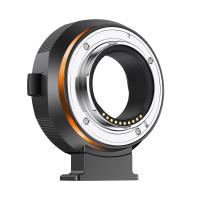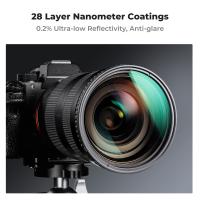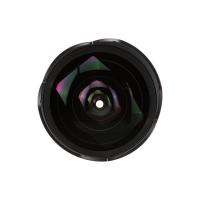Can You See Chlamydia Under A Microscope ?
Yes, Chlamydia can be seen under a microscope.
1、 Chlamydia trachomatis: Microscopic features and morphology of the bacterium.
Chlamydia trachomatis is a bacterium that causes the sexually transmitted infection known as chlamydia. When it comes to visualizing Chlamydia trachomatis under a microscope, it is important to note that it is an intracellular bacterium, meaning it lives and replicates inside host cells. Therefore, directly observing the bacterium itself can be challenging.
However, certain techniques can be employed to indirectly detect and visualize Chlamydia trachomatis. One commonly used method is staining the infected cells with specific dyes, such as Giemsa or immunofluorescent stains. These stains can highlight the presence of the bacterium within the host cells, allowing for its identification under a microscope.
Microscopically, Chlamydia trachomatis appears as small, round or oval-shaped structures within the infected cells. These structures are called inclusion bodies and are composed of the replicating bacteria. They can be visualized as distinct, dense structures within the cytoplasm of the host cells.
It is important to note that the size of Chlamydia trachomatis is extremely small, ranging from 0.2 to 1.5 micrometers in diameter. This makes it challenging to observe the bacterium itself without staining techniques or more advanced microscopy methods.
It is worth mentioning that advancements in microscopy techniques, such as electron microscopy, have allowed for higher resolution imaging of Chlamydia trachomatis. These techniques have provided more detailed insights into the morphology and ultrastructure of the bacterium, aiding in its identification and characterization.
In conclusion, while Chlamydia trachomatis itself may be difficult to visualize directly under a microscope due to its intracellular nature and small size, staining techniques and advanced microscopy methods can be employed to indirectly detect and visualize the bacterium within infected host cells.

2、 Chlamydia infection: Identifying chlamydia in clinical samples under a microscope.
Chlamydia infection is caused by the bacteria Chlamydia trachomatis, which primarily affects the genital tract. While it is possible to identify chlamydia in clinical samples under a microscope, it is not the most common method used for diagnosis.
Traditionally, chlamydia diagnosis has relied on laboratory tests such as nucleic acid amplification tests (NAATs) or enzyme immunoassays (EIAs). These tests detect the presence of chlamydial DNA or antigens in patient samples, providing highly accurate results. They are considered the gold standard for chlamydia diagnosis due to their sensitivity and specificity.
Microscopic examination of clinical samples can be used as an adjunct to these tests, particularly in resource-limited settings where advanced laboratory facilities may not be available. However, it is important to note that visualizing chlamydia under a microscope requires specialized staining techniques, such as the Giemsa or immunofluorescence staining methods.
Furthermore, chlamydia bacteria are intracellular pathogens, meaning they reside within the cells of the host. This makes their visualization under a microscope more challenging, as they are not readily visible in routine microscopic examination of clinical samples.
In recent years, there has been a shift towards molecular diagnostic methods for chlamydia detection, as they offer higher sensitivity and specificity compared to microscopic examination. These methods also allow for the detection of asymptomatic infections, which are common in chlamydia cases.
In conclusion, while it is possible to see chlamydia under a microscope with specialized staining techniques, it is not the primary method used for diagnosis. Nucleic acid amplification tests and enzyme immunoassays are the preferred methods due to their accuracy and ability to detect asymptomatic infections.

3、 Chlamydia life cycle: Stages of chlamydial development observed through microscopy.
Chlamydia is a type of bacteria that can cause various infections in humans, including sexually transmitted infections. When it comes to observing chlamydia under a microscope, it is important to note that the bacteria itself is too small to be seen directly using a light microscope. However, specialized techniques and staining methods can be employed to visualize the presence of chlamydia in clinical samples.
To detect chlamydia under a microscope, samples such as swabs or urine are typically collected from the infected individual. These samples are then processed and stained using specific dyes that can bind to the chlamydial bacteria. This staining technique allows for the visualization of the characteristic intracellular forms of chlamydia, known as elementary bodies and reticulate bodies.
Under a microscope, the elementary bodies of chlamydia appear as small, round structures, while the reticulate bodies are larger and have a more irregular shape. By examining these stained samples, healthcare professionals can identify the presence of chlamydia and make a diagnosis.
It is important to note that while microscopy can be used to detect chlamydia, it is not the only method available. Molecular techniques, such as polymerase chain reaction (PCR), are now commonly used for chlamydia diagnosis due to their higher sensitivity and specificity.
In conclusion, while chlamydia itself cannot be seen directly under a light microscope, its presence can be detected through specialized staining techniques. However, it is worth noting that molecular techniques like PCR are now the preferred method for chlamydia diagnosis due to their increased accuracy.

4、 Chlamydia diagnosis: Microscopic methods for detecting chlamydia in laboratory settings.
Chlamydia is a sexually transmitted infection caused by the bacterium Chlamydia trachomatis. While it is possible to detect chlamydia under a microscope, it is not the most common method used for diagnosis in laboratory settings.
Microscopic methods for detecting chlamydia involve staining samples with specific dyes that can highlight the presence of the bacteria. One commonly used staining technique is the immunofluorescence assay (IFA), which uses fluorescent antibodies to bind to chlamydia antigens. This allows the bacteria to be visualized under a fluorescence microscope. Another method is the Giemsa stain, which can also be used to identify chlamydia in clinical samples.
However, these microscopic methods have limitations. They require skilled technicians to perform the staining and interpretation of the results, and the sensitivity and specificity of these techniques may vary. As a result, more advanced and accurate diagnostic methods have been developed.
Currently, the most common method for diagnosing chlamydia is nucleic acid amplification tests (NAATs). These tests detect the genetic material (DNA or RNA) of the bacteria in patient samples, such as urine or swabs from the infected site. NAATs are highly sensitive and specific, providing accurate results even in asymptomatic individuals.
It is important to note that while microscopic methods can be used for chlamydia diagnosis, they are not the primary method used in laboratory settings. NAATs have become the gold standard due to their high accuracy and ease of use. Therefore, if you suspect you have chlamydia, it is recommended to seek medical attention and get tested using the appropriate diagnostic methods.






































